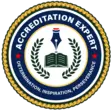How to get state approval in Minnesota
Securing a License to Operate a Non-Accredited University in Minnesota involves navigating a complex regulatory environment. Governed by the Minnesota Office of Higher Education, the licensing process ensures that all post-secondary institutions adhere to the state’s rigorous standards for quality and integrity. This guide will walk you through the essential steps from conceptualization to successful licensing in Minnesota’s higher education approval process.













